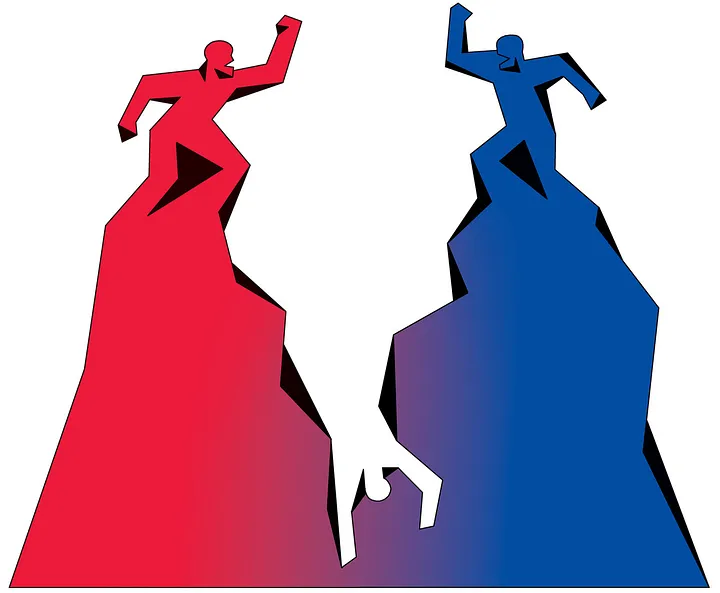Every now and then, in the grand circus that is American politics, the two major parties, Democrats and Republicans, put on a show for the public. They seem to be at each other’s throats, arguing over policy, ideology, and the direction they believe the country should be heading. But behind this rousing performance of discord, there exists an undercurrent of collaboration and mutual understanding that often goes unnoticed. This is the stage of bipartisanship, and the players are well-rehearsed.
So, let’s pull back the curtain a bit and uncover the secrets of this grand political theater.
The Opening Act: A History of Bipartisanship
First, a brief historical primer. Bipartisanship, or the cooperation between two political parties that usually oppose each other’s policies, has always been a defining feature of American politics. From the early days of the Republic, there have been moments of collaboration across the aisle to address critical issues. But these instances often seem like anomalies, moments of unity amid the prevailing narrative of division and discord. Yet, they form a critical part of the political landscape.
The Stagecraft: Setting the Scene
In modern politics, bipartisanship is often set up as a lofty ideal, a goal to be aspired to, a sign of maturity and wisdom. It’s often invoked during major political speeches, with phrases like “reaching across the aisle” and “working together for the common good”. These phrases are designed to create a sense of unity and cooperation, despite the underlying divisions.
But beneath this idealistic facade, the reality is more complex. In truth, bipartisanship is a tool, a means to an end, used by both parties to advance their respective agendas. It is a stage where they can perform, appearing to compromise and cooperate while simultaneously pushing their own policies and ideologies.
The Performance: The Actors and their Scripts
Bipartisanship, in its current form, is essentially a performance. Politicians play their roles, reciting their lines, and acting in a way that convinces the audience (the public) that they are working together for the greater good.
But like any good performance, the script is meticulously crafted. The politicians know what they can say, what they can’t say, and how far they can push before they risk breaking the illusion. They know how to use the language of bipartisanship to their advantage, crafting messages that sound conciliatory and cooperative while subtly advancing their own agendas.
The Choreography: The Dance of Policy Making
If we think of political discourse as a performance, then policy-making is the choreography. It is where the actors (politicians) execute their moves (policy proposals and negotiations) in a way that maintains the illusion of cooperation.
In this dance, each party knows their steps. They understand the need for balance, for give-and-take. They know when to push, when to pull back, and when to let the other party take the lead. This delicate dance is not about achieving perfect harmony, but about creating the illusion of it.
The Finale: Unmasking the Performance
The real secret of the bipartisan stage is not that it’s all a performance, but that the performance is necessary. It serves a purpose. It gives the public a sense that their leaders are working together, that they’re putting aside their differences for the greater good.
But beneath the surface, the performance also allows politicians to pursue their own agendas, to advance their own policies, and to cater to their own bases. It allows them to appear cooperative while still being competitive, to seem conciliatory while still pushing for their own goals.
In the grand theatrical of American politics, the bipartisan stage is an essential part of the show. And like any good performance, it requires skill, precision, and a keen understanding of the audience.
The Critique: Unveiling the Truth
While this grand performance serves a purpose, it’s not without its drawbacks. The emphasis on appearance over substance can lead to policies that are more about posturing than solving real problems. It can also create a cynical public, one that sees through the performance and disengages from the political process.
There’s also the risk of groupthink. When the two parties work together, they often end up reinforcing each other’s views and perspectives. This can lead to a lack of diversity in policy-making and stifle innovative solutions.
Furthermore, the focus on bipartisanship can sometimes overlook the needs of marginalized communities. When politicians strive for consensus, they often prioritize the majority’s views and ignore the concerns of the minority. This can lead to policies that perpetuate inequality and fail to address systemic issues.
The Encore: A Path Forward
Despite its flaws, the bipartisan stage isn’t going anywhere. It’s too deeply ingrained in the American political fabric. But that doesn’t mean it can’t be improved.
Transparency can help break down the illusion and allow the public to see the reality behind the performance. Greater public involvement in the political process can also help ensure that policies reflect the needs and concerns of all citizens, not just those in the majority.
Moreover, politicians must be held accountable for their performances. They need to be reminded that their roles are not just about appearing cooperative, but about genuinely working towards the common good.
The Final Curtain: Understanding the Performance
The bipartisan stage is a complex and nuanced part of American politics. It’s a performance, yes, but it’s also a tool, a mechanism for negotiation and compromise. And while it’s not without its flaws, it plays a crucial role in the political process.
Understanding this performance, seeing through the illusion, is the first step towards a more authentic, more effective form of politics. It’s about recognizing the role of the bipartisan stage and learning how to use it to our advantage.
Because at the end of the day, the bipartisan stage is not just a spectacle for the public. It’s a space for dialogue, negotiation, and progress. And with the right understanding, it can be a stage for real, meaningful change.
So, as the audience in this grand theater, we need to remember that while the performance is entrancing, it’s the work that happens behind the scenes, the discussions, the negotiations, the compromises, that truly shape the direction of our nation. And it is our responsibility, as informed citizens, to ensure that this stage serves its true purpose: the progress of our society.












